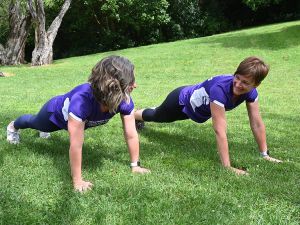Regional Development Minister Shane Jones delivered a speech this month at the inaugural Regional Growth Summit where he spoke about the Regional Infrastructure Fund, or RIF. Here's part of his speech...
The RIF is a capital fund with the primary purpose of accelerating infrastructure projects that will make a material difference in our regions.
The RIF drives productivity, prosperity, and resilience by focusing on two key investment categories: Resilience infrastructure and Enabling infrastructure.
Resilience infrastructure is infrastructure that improves a region's ability to absorb, adapt and respond to stresses and shocks caused by things like weather events, energy and water security issues or connectivity challenges.
Resilience infrastructure is deeply interlinked with enabling economic growth and development. It's the foundation of your whare, if your economy was a house.
Infrastructure done well protects your existing assets, improves investment confidence and enables people, goods, and information to keep flowing during and after an event.
Through Budget 2024, an initial $200 million of the RIF was dedicated for flood resilience infrastructure with up to $101.1m committed to 42 flood resilience projects. These are priority projects, most of which were identified by local governments in their 'Before the Deluge 2.0' report on flood management. I am delighted to confirm, after assessing each of the 42 projects, that RIF co-investment is being made available so this important work can begin. All projects are consented, and are ready for a 2024/25 summer season start.
Together, these projects are estimated to improve flood protection to farmland, industrial and residential areas across Te Tauihu. For example, Spring Creek will be further protected alongside SH1 and the Picton-Christchurch main rail line, and in Motueka approximately 1400 hectares of fertile and productive land will be protected by the Lower Motueka River Stopbank Refurbishment.
I mentioned the second focus of the RIF is supporting 'Enabling infrastructure', infrastructure that enables growth by ensuring regions are well-connected and productive.
We are seeking to co-invest in regional assets that are or will be used by, and generate benefits for, multiple businesses or many parts of a community. This could be a shared service such as an innovation park or facility, or a supply chain and transport solution.
A great example of an enabling infrastructure project in your backyard is the New Zealand Wine Centre - Te Pokapū Wāina o Aotearoa, which Government granted a co-investment loan of $3.79m towards. The Centre is an integrated innovation, research and education centre for viticulture at the Nelson Marlborough Institute of Technology in Blenheim.
The centre includes the newly opened Experimental Future Vineyard, a state-of-the-art facility enabling research to future proof the next generation of wine, ensuring the sector continues to thrive and diversify through innovation.
Another example of an enabling infrastructure project is the upgrade of Golden Bay's Port Tarakohe. The Government invested $6m, alongside Tasman District Council's $6.7m investment, to update and expand port infrastructure to enable access to commercial marine berths while creating more safe working wharf space, a new food-grade wharf area and a harbour master building. It's great to see this work now underway.
These projects are tangible examples of why enabling infrastructure is important. Co-funding unlocks and expedites the growth potential in the regions.
The RIF is different to previous government development funds. Our focus is on how the Crown can better deliver in the regions by accelerating major regional infrastructure projects through larger transformational capital investment.
$1.2b is a substantial amount, but it will only go so far to reducing the infrastructure deficit.
We are looking to you to identify what's most important for your region in terms of future growth and development. The question you need to be asking is, in what ways are the projects you are putting forward increasing the resilience in your area of New Zealand?
My message to you all is that we are seeking opportunities for strategic, enduring partnerships and we want to see considered proposals that reflect that and will help transform our regions, not just now but for the future. I'm telling you now, this is not fund for wish lists. Remember, we are investing for cumulative impact. Keep working together with each other, and with us to align your priorities and the projects that you put forward for consideration for RIF funding.


















